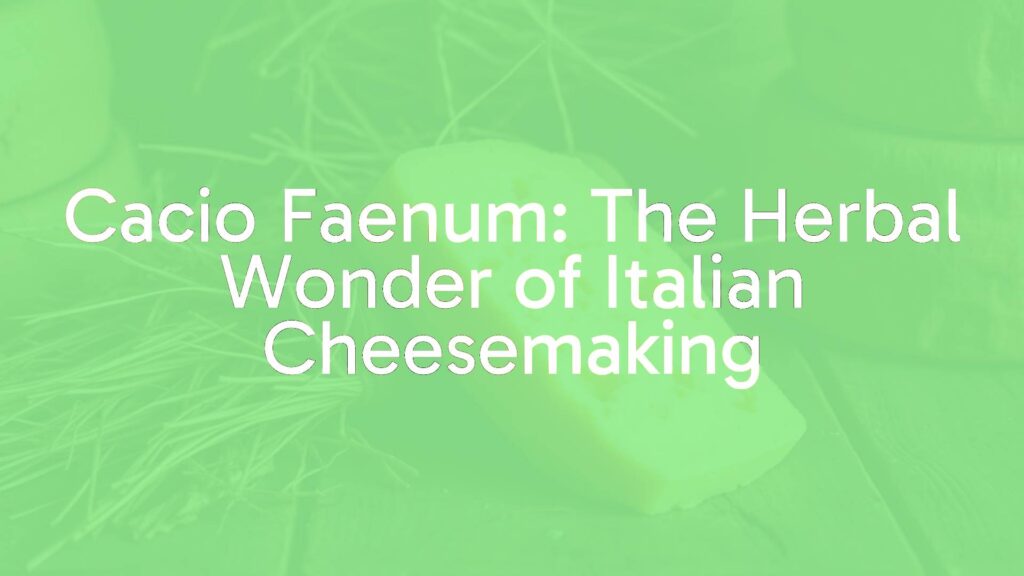Cacio Faenum: A Distinctive Italian Herb Cheese
Defining Features and Appeal
Cacio faenum is an intriguing Italian cheese with roots that run deep into pastoral traditions. Its name, a blend of “cacio” (cheese) and “faenum” (Latin for hay), hints at its most distinguishing feature: the cheese is aged while wrapped in fragrant hay. This technique imparts earthy, herbal notes and a uniquely rustic aroma, setting cacio faenum apart from more conventional Italian cheeses.
Historical Notes and Regional Heritage
The origins of cacio faenum can be traced to Central Italy, with Tuscany and Lazio often cited as the heartlands of this cheese. Centuries ago, rural farmers sought to make the most of their resources, and hay was abundant after seasonal harvests. Wrapping cheese in hay was both a means of preservation and a way to infuse the wheels with the subtle essence of the local fields, following a practice that has been passed down generations as a proud expression of agricultural ingenuity.
Production and Uniqueness
Traditional cacio faenum is crafted from sheep or cow’s milk, occasionally employing a blend, depending on what is prevalent in the region. After forming and salting, cheese wheels are enveloped in natural hay, often sourced from the same fields grazed by the livestock that supplied the milk. As the cheese matures, the hay acts as both a protective layer and a source of flavor, promoting an environment that helps develop complex, grassy undertones and occasionally floral or herbal hints. Though not a step-by-step recipe, this method stands out for its reliance on natural, local materials and low-intervention aging processes.
Ways to Enjoy and Pairings
Cacio faenum is renowned for its distinctive, piquant character and semi-firm texture. Sliced or cubed, it makes an exceptional addition to antipasto platters, where its aromatic profile is best appreciated alongside cured meats, rustic breads, and olives. It also shines as a component in cheese boards paired with fresh or dried fruit—figs and pears make particularly good companions. For beverages, robust red wines from Tuscan or Lazian vineyards, or even a crisp white, can accentuate the cheese’s earthy complexities.
Cultural Relevance and Traditional Enjoyment
Far more than just a foodstuff, cacio faenum is a celebration of the Italian countryside and time-honored rural practices. In festivals and local gatherings, you may encounter the cheese served simply, or as a centerpiece for communal meals that highlight local produce and wines. The act of unwrapping the hay-laden wheel is an experience in itself, emblematic of values like authenticity and a close connection with the agricultural landscape.
Serving Tips and Recommendations
For an optimal tasting experience, bring cacio faenum to room temperature before serving—this releases the cheese’s full aromatic bouquet. Do not remove all of the hay immediately; allowing guests to experience its scent up close enhances the cheese’s story and intrigue. Though often enjoyed in its pure form, the flavors of cacio faenum intensify when paired with honey, walnut bread, or even in salads featuring bitter greens and roasted vegetables.
Variations and Modern Interpretations
While the hay-wrapped style is the hallmark, some producers experiment with introducing other herbs or wildflowers into the hay, resulting in subtle regional differences. More contemporary small dairies have also started using organic milk exclusively, further underscoring the cheese’s connection to the land and its traditions.
In summary, cacio faenum is much more than an artisanal curiosity—it is a flavorful testament to Italy’s enduring rural lifestyle, offering a multi-sensory experience for cheese lovers and cultural enthusiasts alike.

